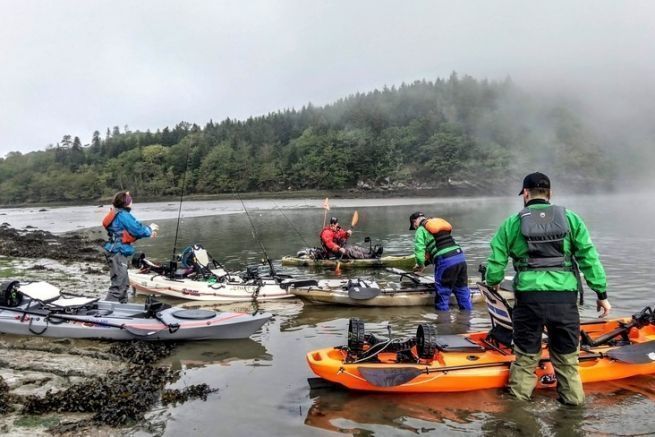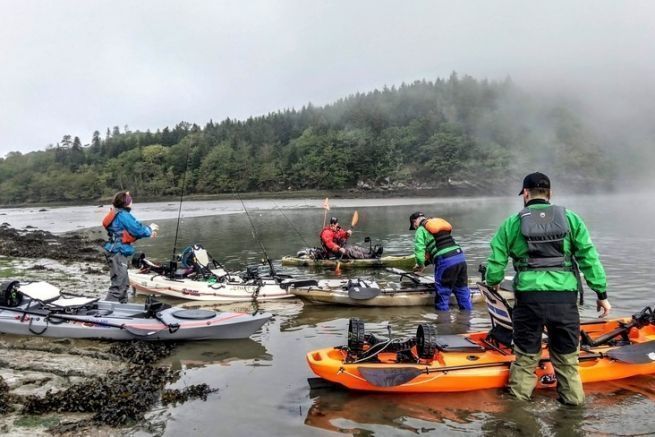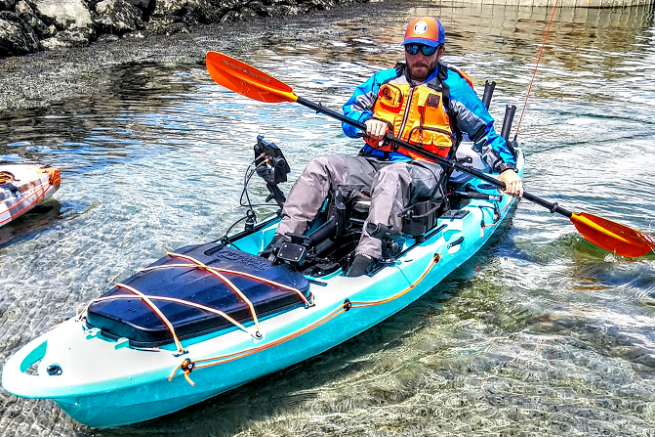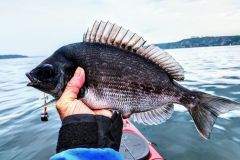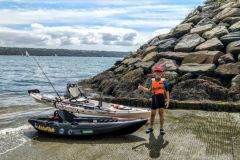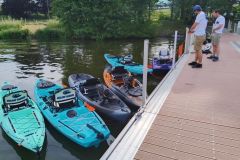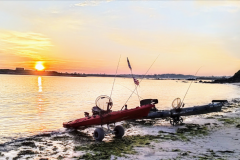Many equipments available for kayak fishing
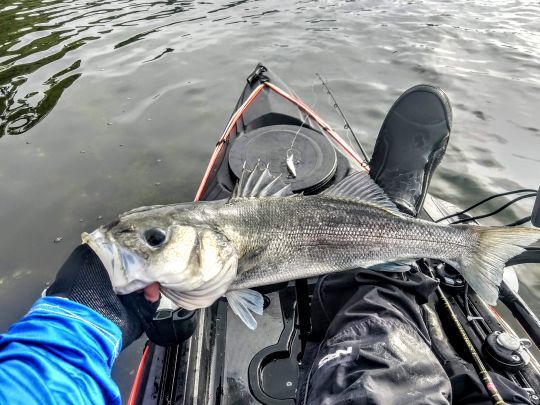
To support this article, I will use as an example my clothing which changes according to the outside temperature and the temperature of the water.
Different manufacturers offer this kind of specific equipment. Depending on the brand, you will find them at all prices, from the affordable ones at the big brands for example, to the most expensive ones for the American brands. The clothing will be adapted to the conditions, the goal being to be as comfortable as possible in its movements and not to die of heat in its clothes.
A few principles should be taken into account systematically, such as:
- Keep your extremities dry
- Wear clothes adapted to the practice and to its specific gestures
- Putting thermal and waterproof barriers between the skin and the outside while letting the skin breathe
Protecting the feet
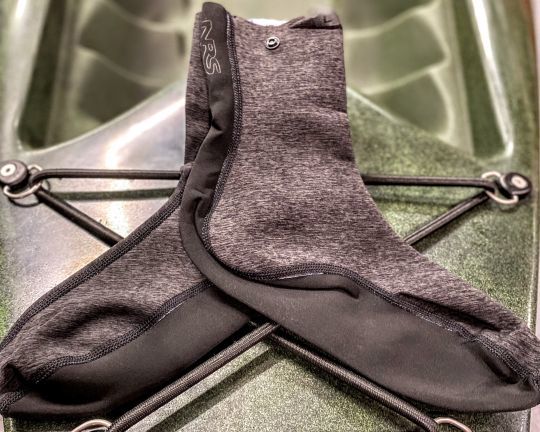
The extremities to be protected are the obvious ones, especially at the feet. You will have to move forward in the water to get your kayak in the starting position. If your feet are soaked from the start by water at 10°C, you will want to get out of the water after 20 minutes.
At first, we will wear a pair of technical socks, the different materials used for their manufacture will make them warm, comfortable, waterproof and breathable. Take half a size larger than your shoe size, this will allow you to add a pair of cotton socks underneath for the colder months.
It is the first thermal and waterproof barrier and it is this principle that it will be necessary to keep for the rest of the equipment. The feet are half protected, we continue to dress.
For the upper body
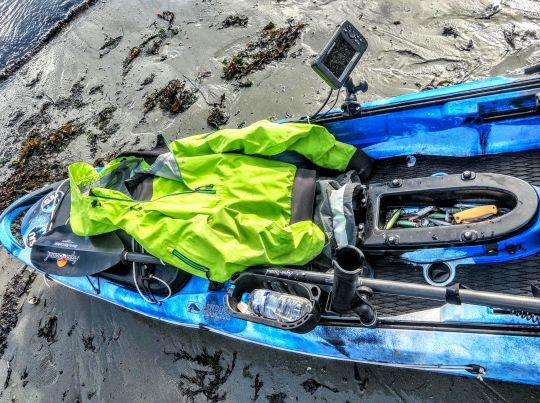
For the torso, a technical tee shirt with a fabric that lets moisture escape from the skin. For those who are more sensitive to cold, thermolactyl-type skin clothing is best. After this first layer, we will move on to a thermal layer of varying thickness (thermal barrier), to be adapted to the outside temperatures.
This layer is a neoprene wetsuit type Long John, with a design adapted to the practice. It is sleeveless, it leaves the armpits free and avoids overheating under the arms when you paddle. Similarly, reinforcements are placed on the different joints, parts that are strongly solicited during stepping or pedaling movements.
This is not the case if you use a wetsuit that will restrict your movements during the session.
The thickness of the suit will depend on the outside temperature. If the temperature is expected to stay below 10°C, I use a 3 mm thick Long John. If the temperature is above 10°C, it will be a 0.5 mm Long John. To finish protecting the torso, I will put a long sleeve technical garment over it. For lower temperatures in the heart of winter, I will add a fleece over it if needed.
